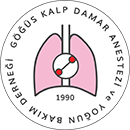

Comparison of Ultrasonography Guidance Versus Direct Palpation Technique for Central Venous Catheterization in Children Undergoing Cardiac Surgery
Esra Aktiz Bıçak1, Deniz Elmastaş1, Fikret Salık2, Yiğit Kılıç3, Cem Kıvılcım Kaçar1, Mustafa Bıçak11Department of Anesthesiology and Reanimation, Diyarbakır University of Health Sciences, Gazi Yaşargil Training and Research Hospital, Diyarbakır, Türkiye2Department of Anesthesiology and Reanimation, Dicle University Faculty of Medicine, Diyarbakır, Türkiye
3Department of Pediatric Cardiovascular Surgery, Diyarbakır University of Health Sciences, Gazi Yaşargil Training and Research Hospital, Diyarbakır, Türkiye
Objectives: We aimed to compare the success rates, procedure times, and complication rates of the Landmark technique with ultrasonography-guided (USG) central venous catheterization (CVC) in children undergoing cardiac surgery.
Methods: This study included 52 patients divided into two equal groups: the CVC with Landmark technique group (Group-1) and the USG CVC group (Group-2). Demographic and clinical characteristics of the patients, internal jugular vein (IJV) diameters, and central venous pressures were measured. Each needle penetration of the skin, defined as one attempt, was recorded. The success rate, number of first-attempt successful cannulations, number of cannulas used, successful cannulation time, and all observed complications were recorded.
Results: The groups had similar age, weight, height, sex, and diagnosis. There were no differences in IJV diameter, IJV intervention history, and basal central venous pressure between the groups. The successful cannulation time was short, and the number of attempts was low in Group-2. The number of successful cannulations and first-attempt success rate were high in Group-2. The number of cannulas was lower in Group-2 than in Group-1. Failed cannulations occurred in no patients in Group-2 and in seven patients in Group-1. The failed cannulations in five of the patients in Group-1 were subsequently successfully achieved with USG. The complication rates were high in Group-1.
Conclusion: USG CVC catheterization increased the number of successful cannulations and chance of first-attempt success on the, shortened the procedure time, and reduced the incidence rate of complications.
Sorumlu Yazar: Esra Aktiz Bıçak, Türkiye
Makale Dili: İngilizce
(229 kere indirildi)













